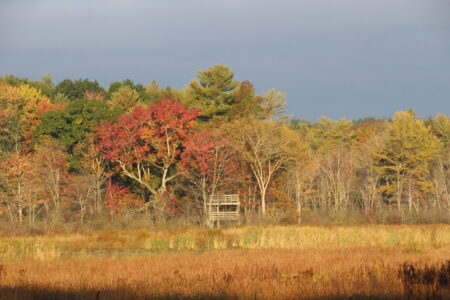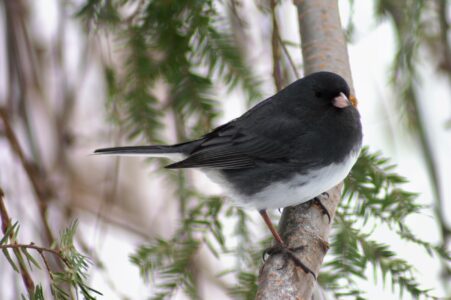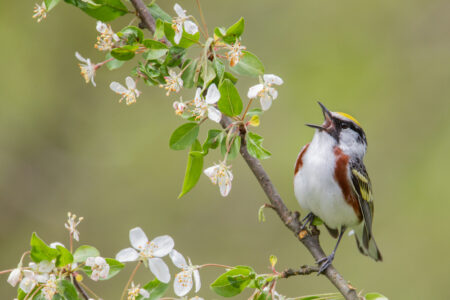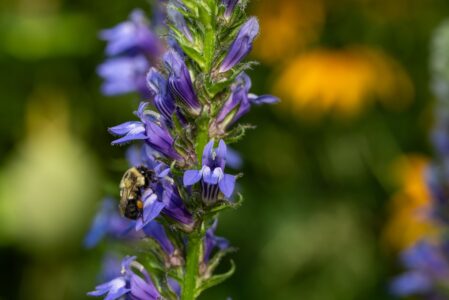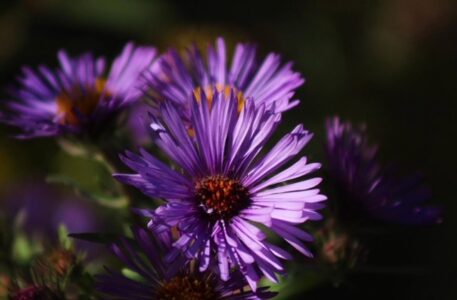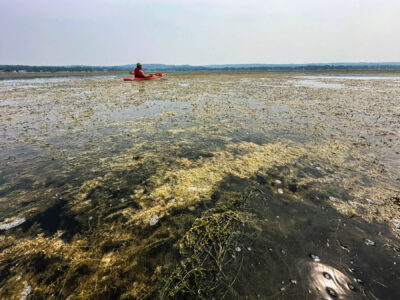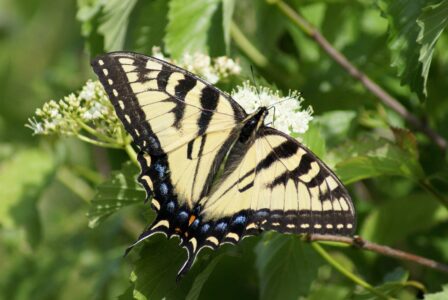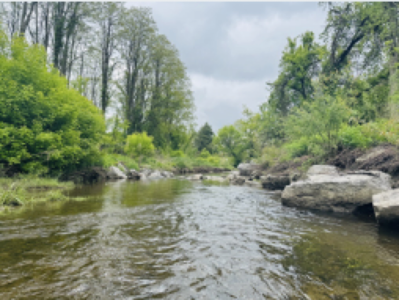Migration Begins As Autumn Arrives
- Fall leaves changing color at Audubon
- Juncos are a species that will migrate from the arctic to spend their winters here in Western New York. Photo by Terry LeBaron
- Chestnut Sided Warbler are a migrating species that travels through the area. Photo by Sandra Rothenburg
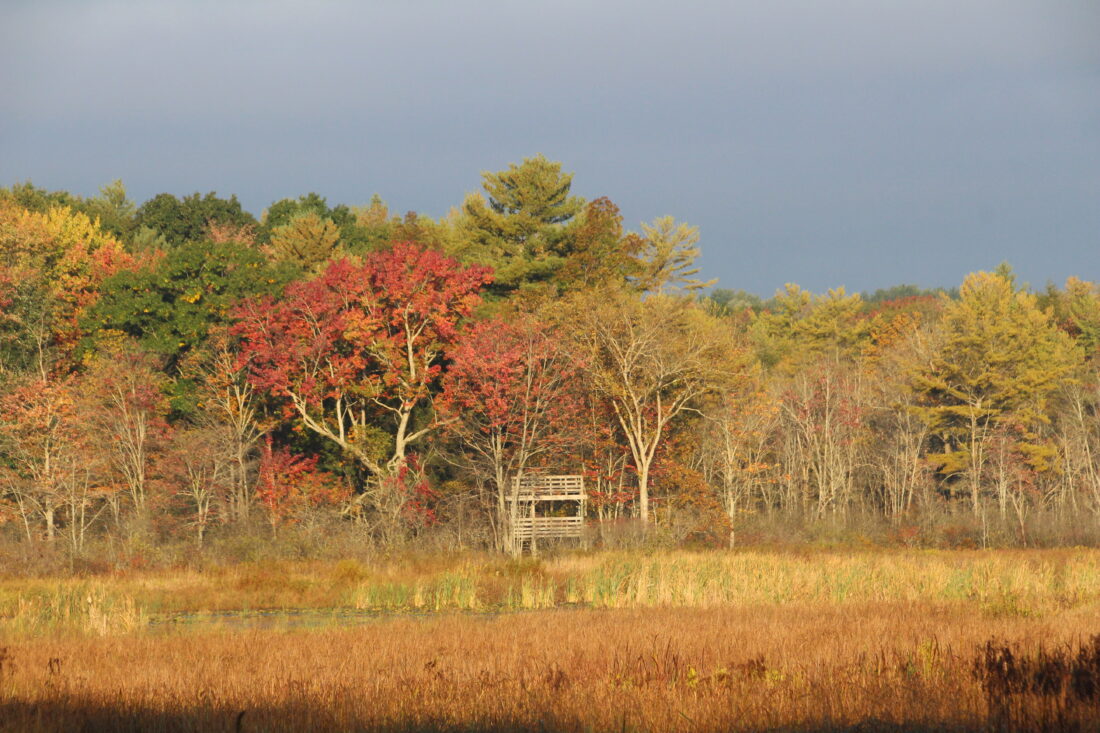
Fall leaves changing color at Audubon
In the last week I have observed the changing color of the leaves and watched as they slowly fell off their trees. Soon enough, the trees will be bare and it will be winter, but in the meantime, I am ready for my favorite season – autumn! Trees are not the only thing that change along with the season, though they might be the most obvious example. While the smell of fall fills the air, students are going back to school, people (including me) start to dig out their sweaters from storage, and pumpkin spice flavor becomes omnipresent.
However, humans are not the only ones who notice and respond to the changes brought by the arrival of fall. Many animals are changing their patterns to prepare for the upcoming winter. While some will start to grow thicker coats and store food for the winter, there is also a subset of animals that will migrate, or travel south, to escape the cold temperatures entirely.
In Western New York, several groups of animals will migrate, including birds, insects, and even some amphibians. The idea of migration isn’t completely foreign to humans, either. There are also people who prefer to spend the winter down south where it is warmer and less snowy than western NY. The animals that migrate take cues from the changes in the environment around them, some clearer than others. With the Autumnal Equinox having passed, daylight hours are gradually getting shorter and temperatures start to dip at night. At the same time, certain food sources begin to dwindle, as insects die off or bury into leaf litter to hibernate for the winter, and plants disperse their seeds and shrivel up until the spring.
One reason that species migrate is to travel where food is more abundant, such as insectivorous (insect-eating) birds. While species like Black-capped Chickadees will store seeds and change their diet for the winter, birds that rely on insects, like the American Kestrel or most warbler species will fly to warmer areas where insects continue to be plentiful throughout the winter months.
While many birds do the bulk of their travel at night, during the day they will forage for food to fuel their trip. By visiting any natural area, you may encounter new faces as they pass through. In fact, there are species that are only seen in this area when passing through in their migration – now is a special time of year to find species that are temporary visitors and would otherwise not be here.
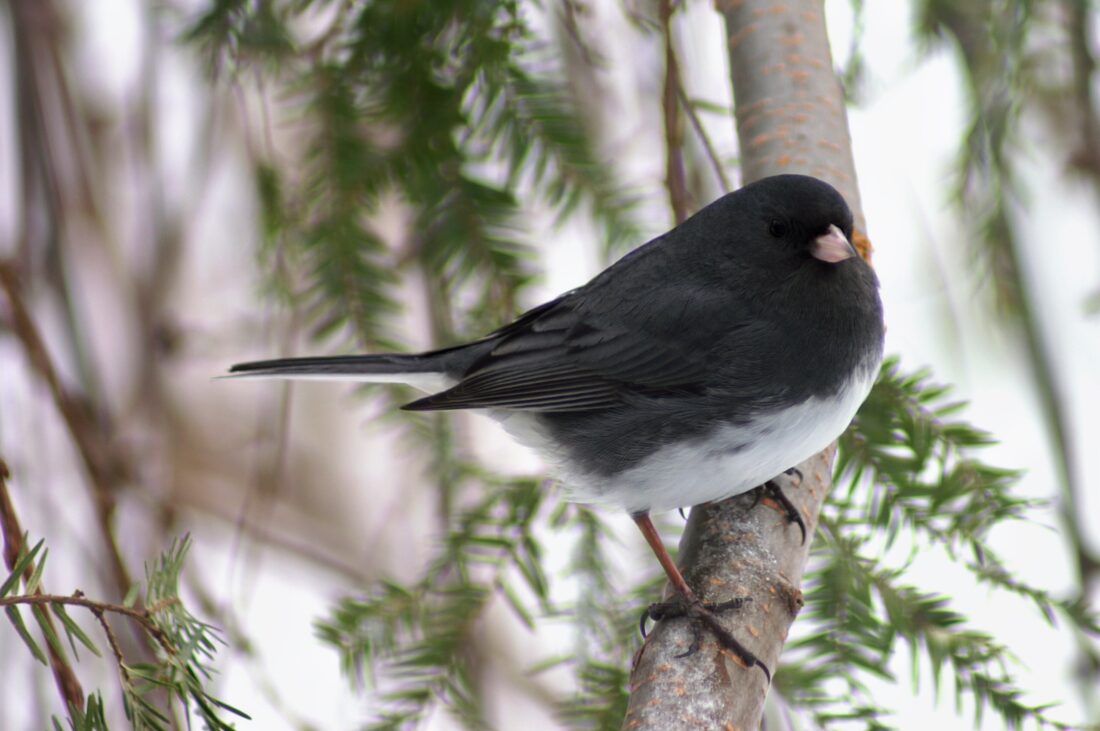
Juncos are a species that will migrate from the arctic to spend their winters here in Western New York. Photo by Terry LeBaron
There are some birds that spend their summers in the high arctic and choose to end their fall migrations here in Chautauqua County. Raptor species like Rough-Legged Hawks and the rare Snowy Owl, songbirds like Dark-eyed Juncos, or waterfowl like Buffleheads and Goldeneyes will be arriving shortly and making themselves at home in the spaces left by those who go further south. Because they spend their summers in the high arctic, they are also well adapted to the winter here.
Many waterfowl species spend their summers further north but will migrate south for the winter. While some are just passing through, others will end their journey here and spend the winter by bodies of water like Chautauqua Lake or the ponds here at Audubon.
Birds are not the only species that migrate, although they are probably the most well-known. Another incredible migration is taking place at the same time, that of the Monarch Butterfly.
Unlike the many other insect species that hunker down to hibernate or lay eggs in protected places before dying off for the winter, every year Monarch Butterflies will make the long and arduous journey down to Mexico, traveling up to 3,000 miles. There, they will cover the trees until it is time for them to return in the spring, lay eggs and produce the next generation of monarchs. For such a small creature to make such a long journey is nothing short of amazing. I know that I would struggle to migrate that far as a human, and they are a tiny fraction of my size.
Another migration rarely considered is the one undertaken by amphibians of the area. Granted, they don’t migrate nearly as far as the other species mentioned thus far. Instead, they go from the low-lying wet areas where they spend the summers (laying eggs, raising young) to the drier upland areas where they can find a cozy space to dig into and hibernate for the winter. Even though these migrations are significantly shorter, you may still find a frog, toad, or salamander making the trek.
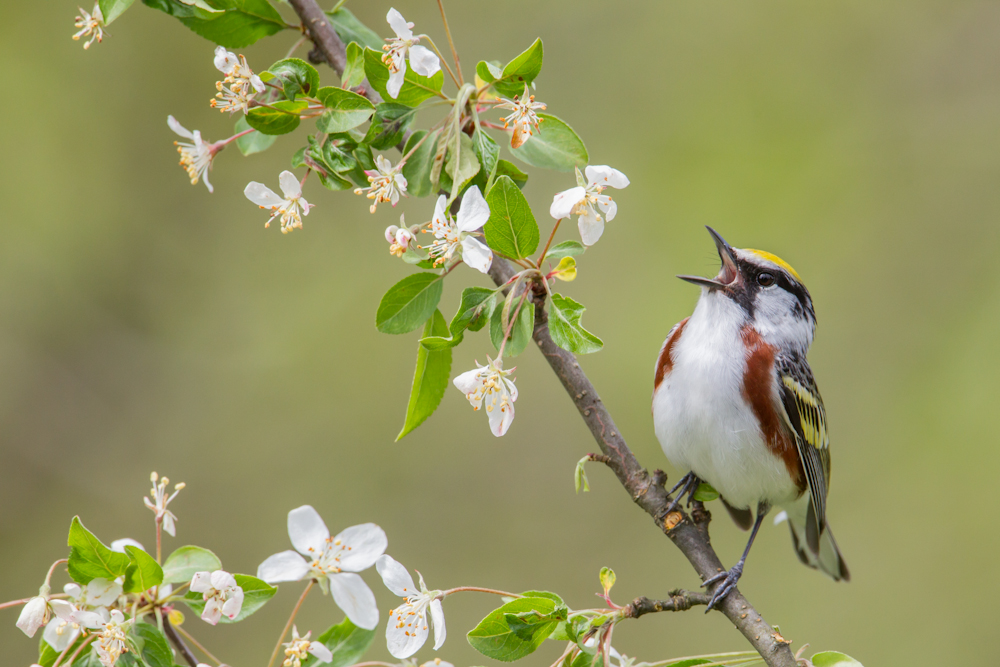
Chestnut Sided Warbler are a migrating species that travels through the area. Photo by Sandra Rothenburg
The landscape is shifting with the season, and I’m very excited to see how the ecology itself changes alongside it. If you take a moment to admire the changing fall leaves or drink a pumpkin spice latte, it is also a prime opportunity to watch and listen for our new winter residents or travelers passing through and embrace the changing seasons.
Audubon Community Nature Center builds and nurtures connections between people and nature. ACNC is located just east of Route 62 between Warren and Jamestown. The trails are open from dawn to dusk and birds of prey can be viewed anytime the trails are open. The Nature Center is open from 10 a.m. until 4:30 p.m. daily except Sunday when it opens at 1 p.m. More information can be found online at auduboncnc.org or by calling (716) 569-2345.

